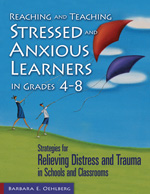
| ||||||||||||
 Extraction - Introduction
Extraction - IntroductionCHILDREN HAVE NOT CHANGED; CHILDHOOD HAS. Teachers today are confronted with student behaviors that were rarely experienced 15 or 20 years ago. Sociologists, mental health professionals, child developmentalists, criminologists and even politicians offer differing explanations. But one truth is certain: no one can offer real solutions until the root causes are clarified.
Societal changes have profoundly affected childhood experiences for America’s children over the past 20 years. Consider the following: frequent violent images in the media, terrorists’ attacks, economics shifts that prompt multiple jobs or joblessness for families, children under the age of one with mothers working, the increasing use of alcohol and drugs dismantling maternal behaviors and care, more mobility and separation from extended families, more grandparents raising grandchildren, more concentration and isolation of poverty, increases in the number of children growing up with one parent absent, increases in child abuse and neglect, and homelessness.
For many children, these changes have altered how they see the world and how they see themselves in that world. These collective changes have contributed to many, many children’s deductions that adults can no longer guarantee total safety, an absolute and universal developmental requirement. So children are making adaptations in order to survive in an insecure world, and it is these adaptations, or maladaptations, that are generating many of the stress-driven behaviors encountered in today’s schools. Acknowledging this correlation does not imply these behaviors are acceptable or appropriate. It does mean that if the field of education wants to reduce or eliminate them, we need to understand the root causes.
The societal changes affecting the early attachment process – where the locking of eyes between caregiver and infant stimulates the infant’s neural development in the prefrontal cortex of the brain – point to two early relationship issues: mothers returning to the workforce soon after the birth of a child and drug use interfering with the attachment process. Children have absolutely no control over these circumstances, yet their neurological circuitry bears the imprint: they will operate out of their prewired neurobiology.
| ||||||||||||
|
© 2006 Barbara Oehlberg Site Designed by
|